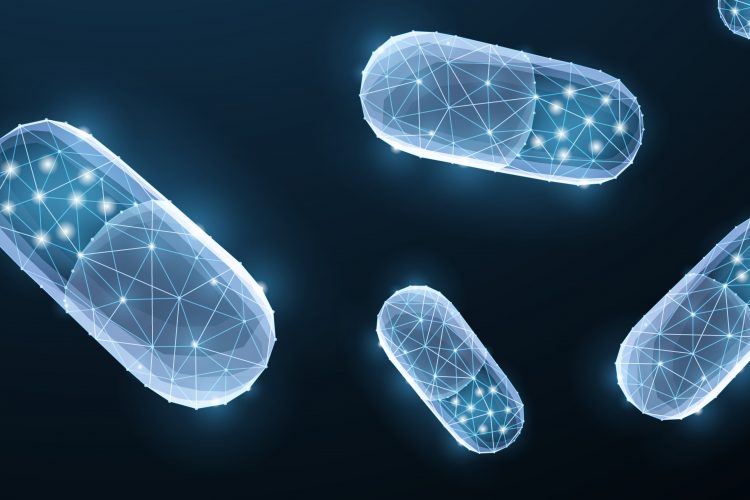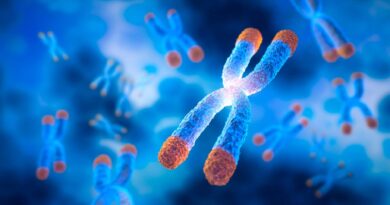Small Molecule Drugs: Bridging the Divide in Healthcare
An inspection of the medicine cabinet in just about any home would reveal pills and syrups by the names of Tylenol, Ibuprofen, or Zyrtec. Their functions vary vastly – some are used for migraines, others for seasonal allergies. Yet, they are all part of a broad class of medications called “small molecule drugs.” Small molecule drugs are formally defined as drugs whose active ingredients are molecules weighing less than 900 Daltons. However, they can be more readily identified through how they are produced; small molecule drugs can typically be manufactured by combining chemicals, while other drugs, mainly biologics, such as vaccines and antibodies, need to be sourced from living organisms like bacteria. Recent years have seen the rise of a new generation of small molecule drugs, and this rise is projected to decrease global inequality in health care.
During the early 1900s, various influential small molecule drugs were discovered and released to the market. Among the ranks are aspirin, in 1899, and penicillin, in 1928. These drugs revolutionized health care. For instance, penicillin turned the tide in the treatment of tonsillitis, bronchitis, and pneumonia, which were previously untreatable. The vigorous rate of small molecule drug development was mainly due to the fact that the alternative, biologics, was not a viable option due to difficulties in its production and distribution. However, technological advancements were brought about by the mid-twentieth-century. Biologics were soon available for production and use in clinical settings. Scientists believed they had exhausted possible small molecule drugs by then, and attention gradually shifted away from small molecule drug development.
With the focus switching to biologics, treatment options were developed for a variety of conditions. However, they came with two key drawbacks: biologics are typically difficult to manufacture and complicated to distribute. Weighing on average 150,000 Daltons, biologics have to be excreted by cell cultures grown in bioreactors. This contributes to a drastically higher price; biologics treatment costs patients an average of US$10,000 to US$30,000 per year, and generics, called biosimilars, are proving ineffective in increasing affordability. In Pakistan, doctors are “reluctant to prescribe biologics due to high prices.” There, only 3.3% of biologic anti-cancer agents are considered affordable. More broadly, 47 percent of the global population lives below the World Bank’s poverty line of US$6.85 per day at present. Consequently, the majority of people cannot afford biologics even if their health warrants it.
Logistical challenges make matters worse. Biologics are fragile and can lose function or become dangerous when removed from refrigerators or deep freezers. Many also require special training and care in administration. As a result, they are inaccessible to many patients, especially those living in developing nations. In Sub Saharan Africa, only 28 percent of hospitals have reliable access to electricity, and 26 percent lack even unstable electricity, leaving biologics inviable. This problem exists even within the United States; certain treatments such as biologic disease-modifying antirheumatic drugs are unavailable in the rural west North Central region, for example.
The lack of availability of treatment options contributes to developing nations, particularly within Sub Saharan Africa, having the lowest life expectancies. There, 37 percent of deaths as of 2019 were due to noncommunicable diseases. They consist of diseases like cardiovascular illnesses, cancer, and diabetes, many of which are increasingly treatable by biologics, including the likes of immunotherapy and artificial insulin. However, with the unavailability of such treatments, many patients are losing their lives to preventable causes.
Notwithstanding, recent years have brought renewed hope that we can solve the limited accessibility of health care. Lately, there has been renewed interest in small molecule drugs, primarily thanks to new approaches to their development. Small molecule drug development during the 1900s generally relied on the “lock and key” mechanism, where researchers sought to identify the active portions of enzymes and design molecules capable of interacting with the sites, similarly to keys working with locks. However, a recent change in perspective brought scientists to consider drugs that react with other parts of the enzyme. This has facilitated the development of a new generation of novel small molecule drugs, including many anti-cancer agents. The new wave of small molecule drugs are expected to change health care on a level paralleling the previous wave.
These new advancements in small molecule drug development have the potential to decrease inequality in global healthcare as small molecule drugs are typically small and simple to produce. This nature makes their production easily scalable, meaning small molecule drugs cost a mean of one US dollar per day. Low cost makes small molecule drugs a more viable option compared to biologics for patients of lower socioeconomic status. The benefits of these drugs extend beyond affordability, though. Most small molecule medications do not require any special equipment or training to distribute and administer. They can be stored in unrefrigerated cabinets and easily taken at home orally as pills or tablets. Consequently, new medications, particularly those addressing conditions previously treated primarily with biologics, could open up affordable and accessible treatment options within developing countries, including during humanitarian aid operations.
One such example is sickle cell disease, a genetic illness affecting up to 13 percent of the population in some parts of South Asia and Central Africa. The main avenue at present for treating sickle cell anemia is by blood transfusions. However, this can be risky in many developing nations due to the lack of screening of donors for HIV and other infectious diseases. Recently developed small molecule drugs such as Voxelotor could be distributed to developing nations in South Asia and Central Africa. Taken orally as a pill, Voxelotor could prove to be a safer and more convenient method for patients, especially those residing in rural areas.
However, the proliferation of the new generation of small molecule drugs is not without its hurdles. Newly developed medications are being sold at large markups to reflect the cost of research and development and to maximize profit for the manufacturers. Voxelotor, as an example, costs an average of US$13,179 for 60 pills, which naturally pushes the drug out of reach for many patients. Nonetheless, these prices are expected to fall significantly within five years of patent expiration as generic competitors emerge. This can be seen in examples such as Lipitor, a cholesterol-combating small molecule drug whose price dropped by 80 percent after the launch of generic versions. Although it will take time, affordable small molecule drugs will eventually land in the hands of patients worldwide.
Diseases are inherently difficult to predict. Many are challenging even to identify. Such inherent difficulties in patient treatment are exacerbated in developing nations and remote locations due to logistical challenges and the lack of consistent electricity. Many patients are thus left without treatment options due to unpredictable availability, challenging distribution, and the high price of existing biologic medications. However, the new generation of small molecule drugs in development are expected to serve such patients. With lower costs and simplified logistics, small molecule drugs have the potential to reduce the volatility in supply and availability. They will help bridge the divide in healthcare access, decreasing global inequality in the realm of medicine.


